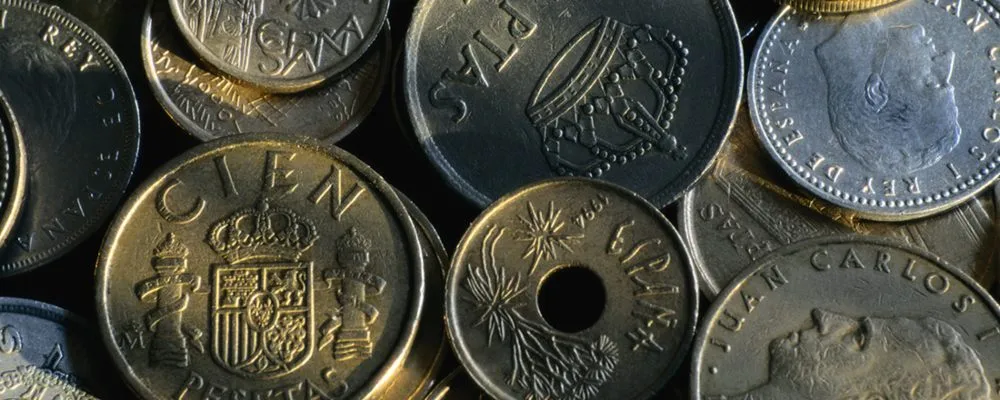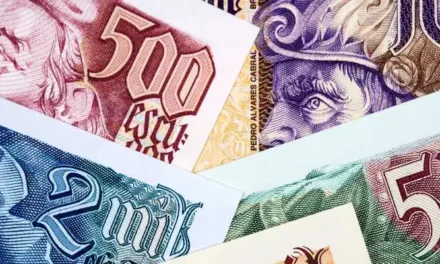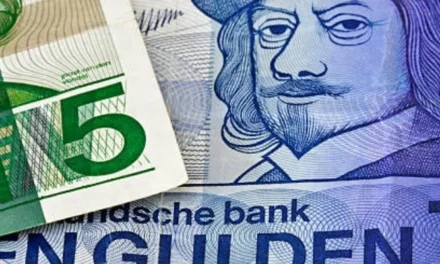If you’re interested in currency, you may have heard of the peseta, the Spanish Currency Before Euro for nearly 150 years. While the euro replaced the peseta in 2002, the peseta still holds a special place in the hearts of many Spaniards. In this article, we’ll explore the history of the peseta, its design, and its value.
Money Before the Euro
Before the euro, Spain’s banknotes were denominated in pesetas. The most common banknotes included the 1,000 pesetas, 2,000 pesetas, 5,000 pesetas, and 10,000 pesetas notes. There were also higher denomination banknotes, such as the 50,000 pesetas and 100,000 pesetas notes.
Pesetas and the Euro
When Spain adopted the euro in 2002, the exchange rate was set at 166.386 pesetas to one euro.
While the peseta is no longer legal tender, it is still possible to exchange peseta banknotes and coins for euros at the Bank of Spain.
The Value of the Peseta
The Spanish Currency Before Euro: The value of the peseta fluctuated throughout its history, but in general, it was a relatively weak currency.
- In 1959, one U.S. dollar was worth approximately 60 pesetas.
- In 1995, one U.S. dollar was worth approximately 135 pesetas.
Today, the peseta is no longer in circulation, and its value is purely sentimental. However, if you happen to have any old peseta banknotes or coins lying around, they may have some value to collectors.

A Brief History of the Peseta
It was introduced in 1869, replacing the Spanish real. It was named after the diminutive form of the Spanish word “peso,” which means “weight.” At its introduction, one peseta was equivalent to ten reales.
Over the years, the peseta’s value fluctuated, and it experienced periods of inflation and deflation. During the Spanish Civil War, the peseta was devalued several times, and its value continued to decline throughout the 1960s and 1970s.
In 1986, Spain joined the European Union, and the peseta was pegged to the European Currency Unit (ECU), which later became the euro. In 2002, the euro replaced the peseta.

The Design of the Peseta
The peseta featured several different designs throughout its history. The first series of peseta banknotes featured the portrait of King Alfonso XIII. Later, banknotes featured images of famous Spaniards, such as Miguel de Cervantes and Francisco de Goya.
The peseta coins also featured various designs. The one-peseta coin featured an image of a young woman wearing a crown of olive branches, while the cien-pesetas coin featured an image of Queen Isabella II.
Cien Pesetas
The cien pesetas coin, featuring the image of Queen Isabella II, was one of the most iconic peseta coins. While it is no longer in circulation, it remains a symbol of Spain’s history and culture.
Buy and found pesetas in the US
If you’re looking to buy Spanish money in the United States, it may be a bit of a challenge. If you’re a collector or interested in obtaining some pesetas for sentimental reasons, there are a few options to explore.
- One option is to search online marketplaces such as eBay or Etsy for sellers who may have pesetas for sale.
- A second option is to visit coin shops or antique stores that specialize in foreign currency. While it may be difficult to find pesetas specifically, these stores may have other rare and unique coins that may interest you.
- Finally, you can try reaching out to coin collector clubs or online forums to see if anyone is willing to sell their peseta collection. These communities may have individuals who are willing to part with their coins for a fair price.
Overall, while it may not be easy to find pesetas in the United States, with some patience and persistence, you may be able to add some to your collection or obtain them for sentimental reasons.
Conclusion
In conclusion, the Spanish peseta may no longer be in circulation, but it played an important role in Spain’s history and culture for nearly 150 years. From its introduction in 1869 to its replacement by the euro in 2002, the peseta experienced both highs and lows. Today, the peseta is a nostalgic reminder of Spain’s past, and it is a popular collectible among currency enthusiasts.







Trackbacks/Pingbacks